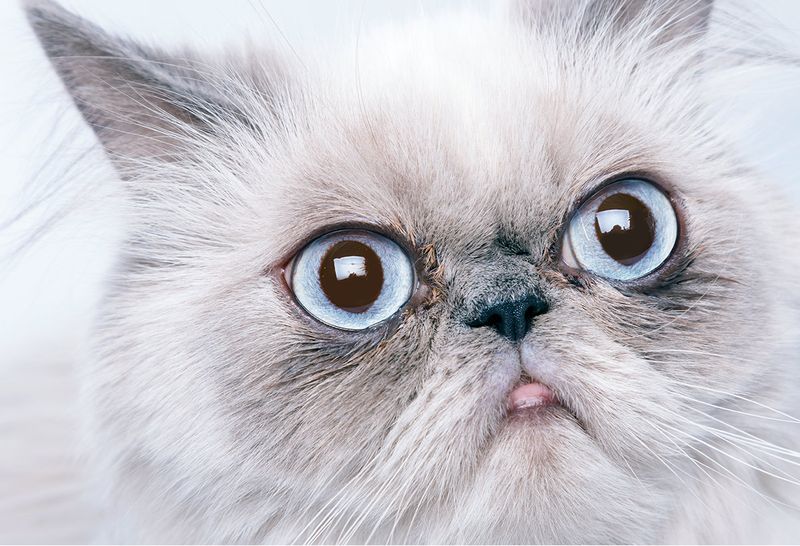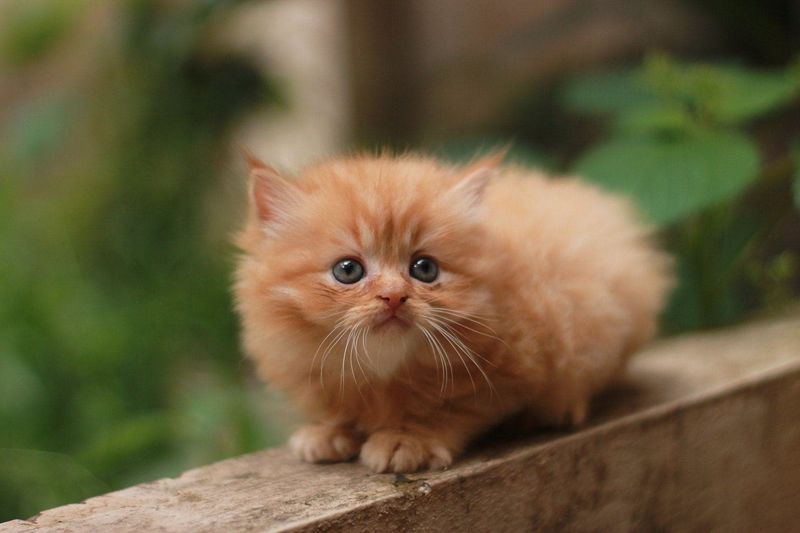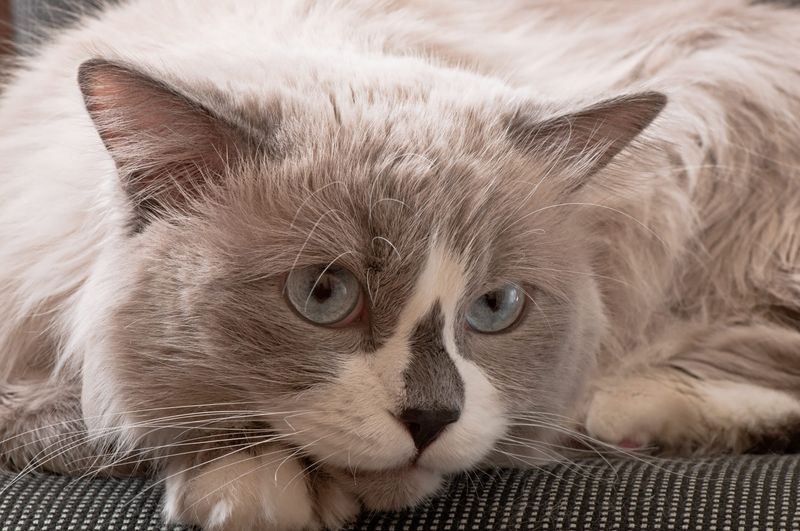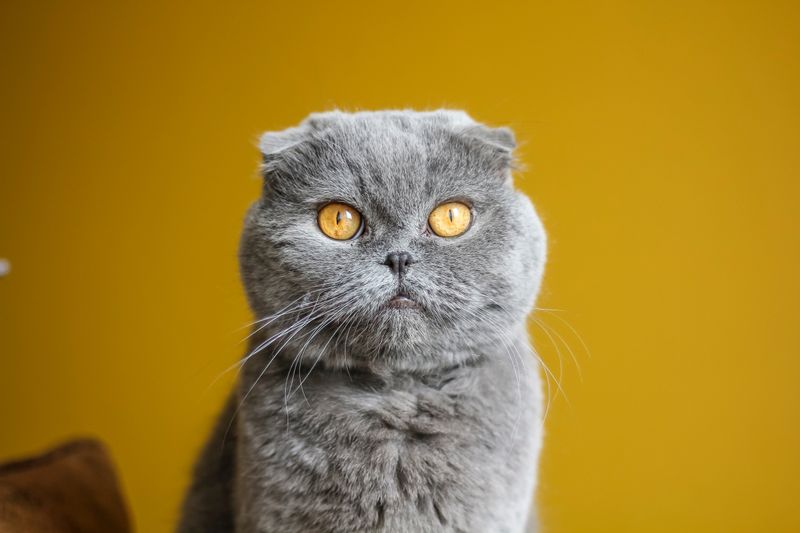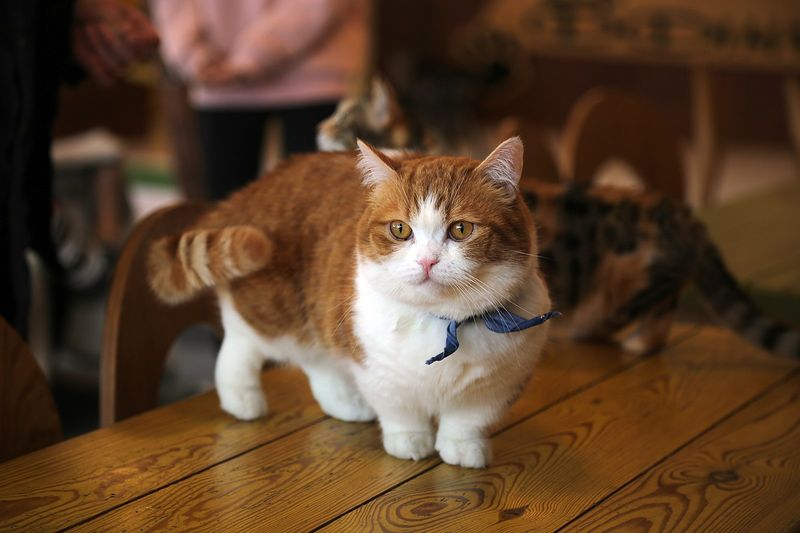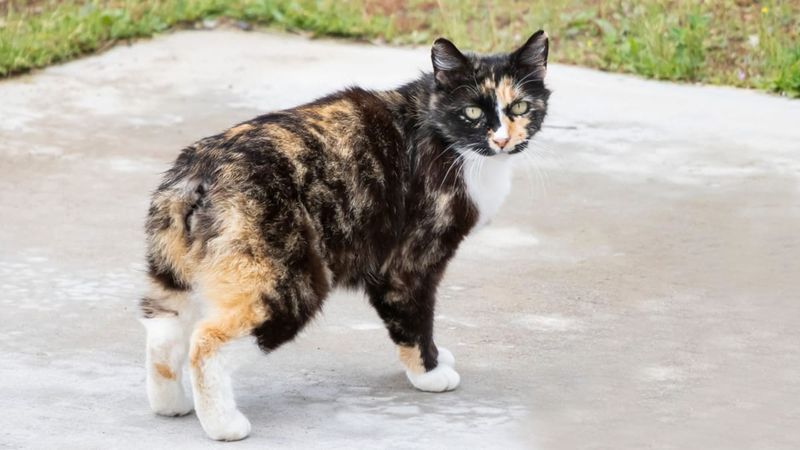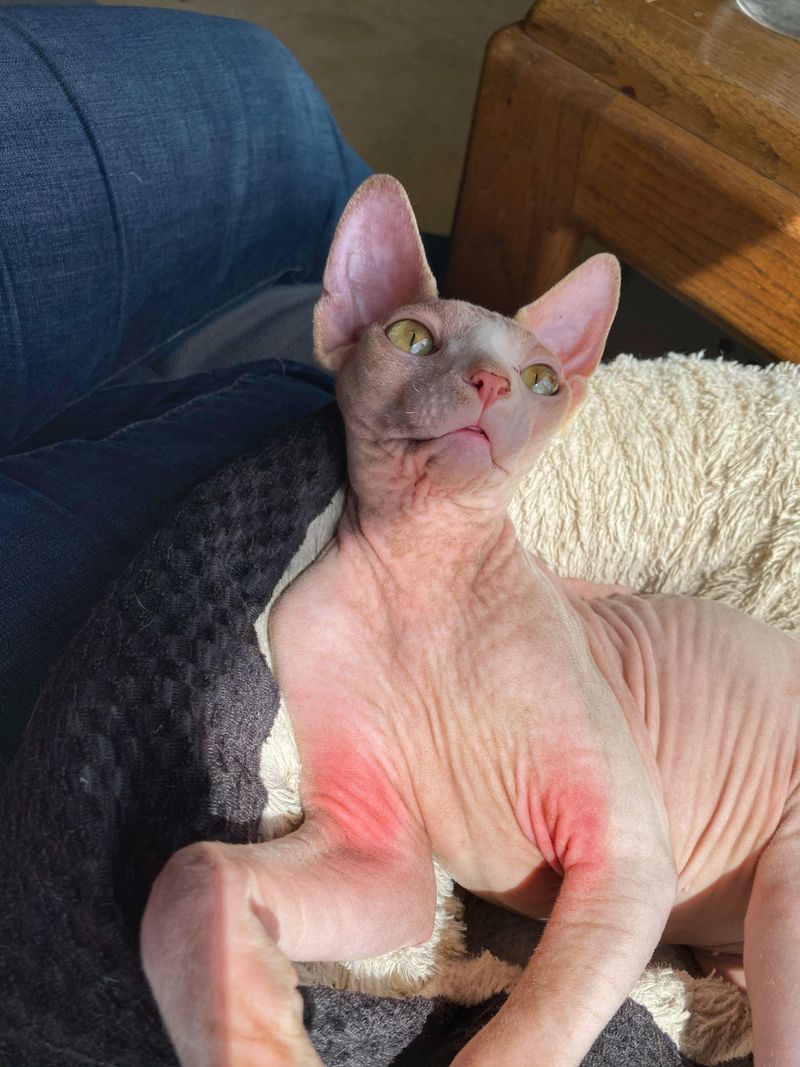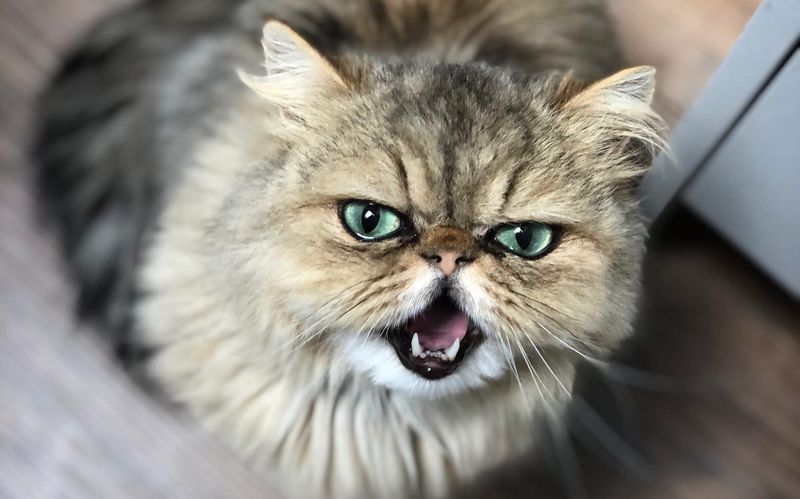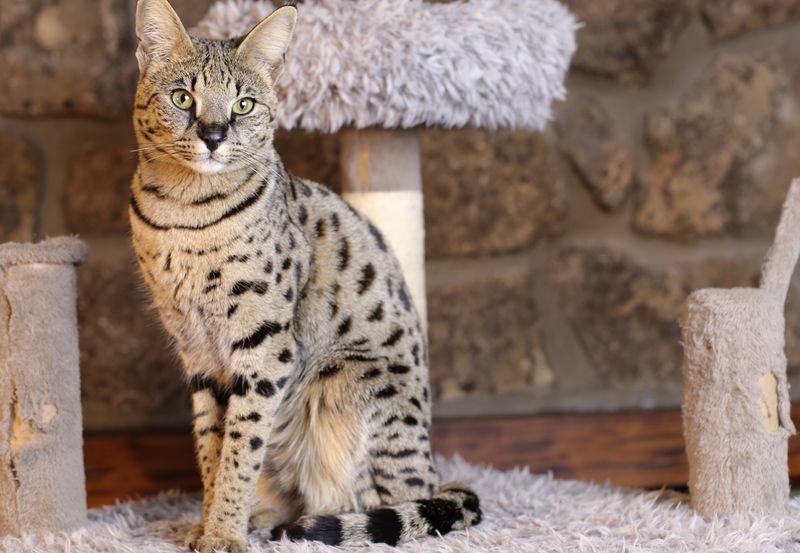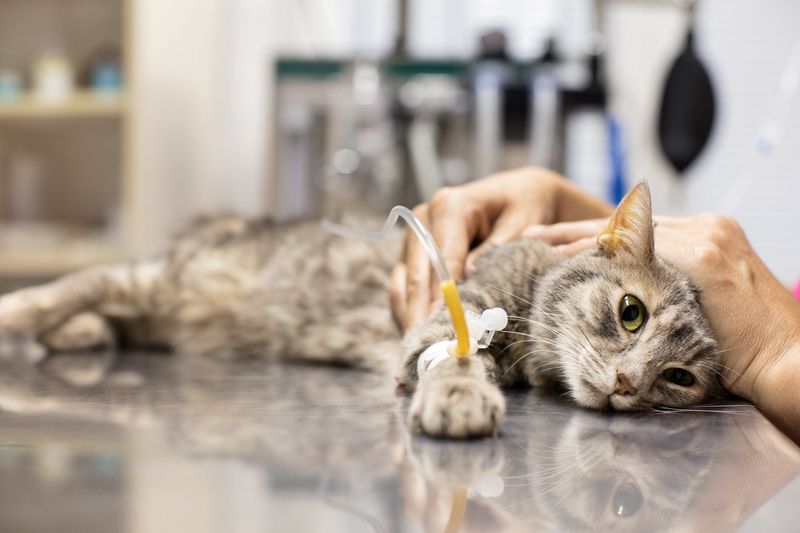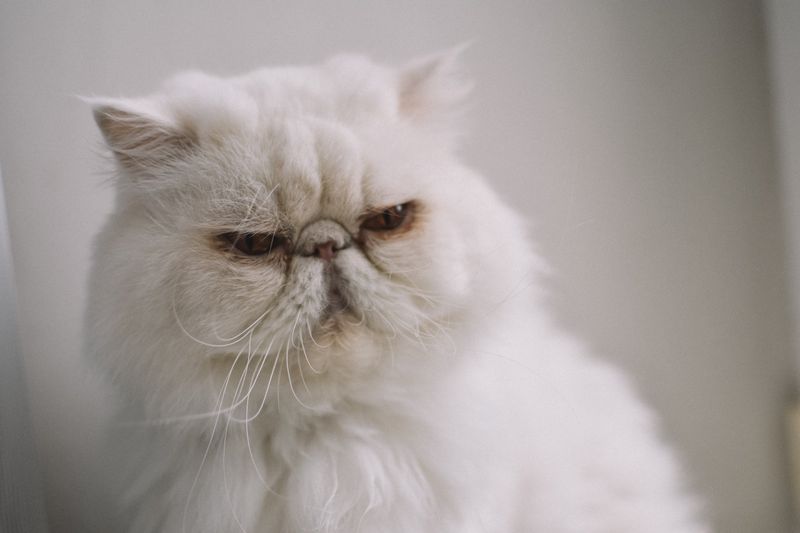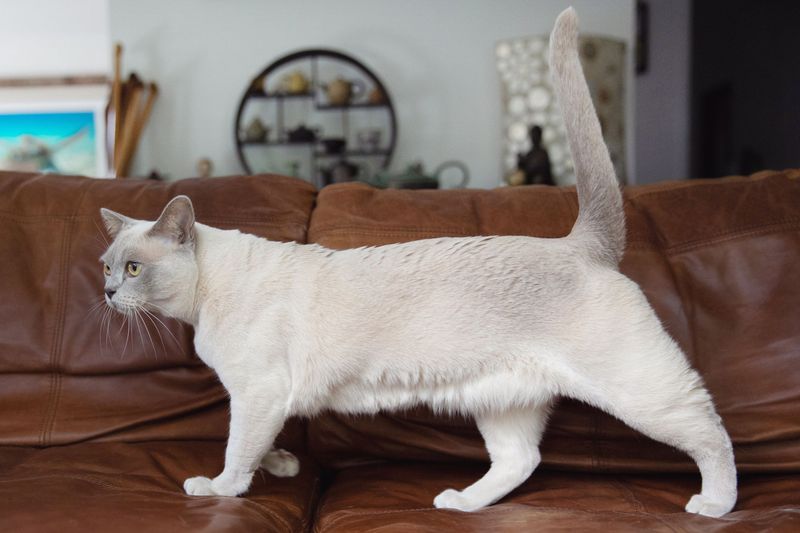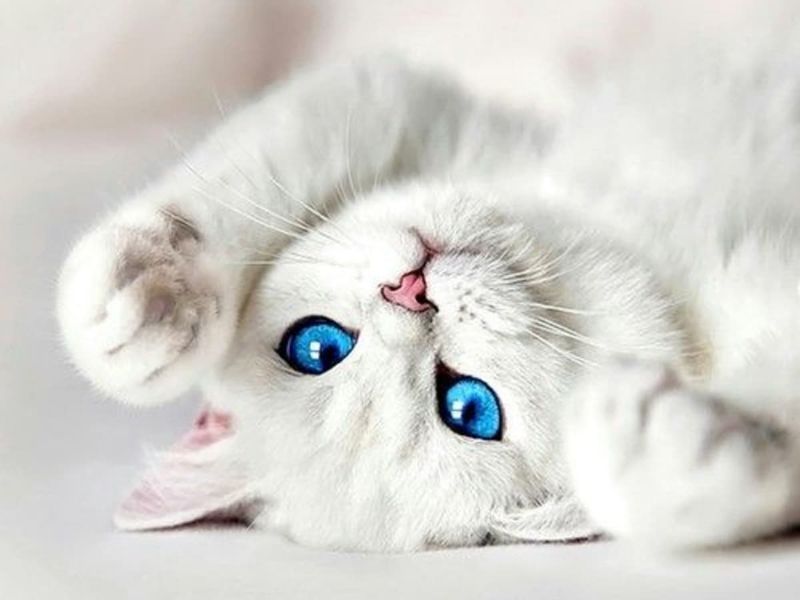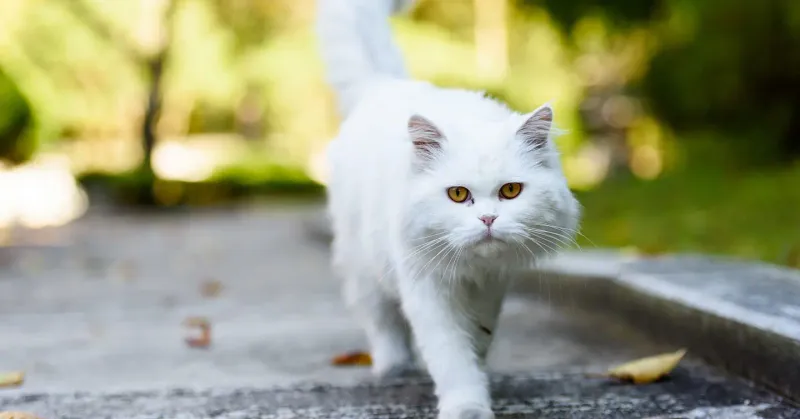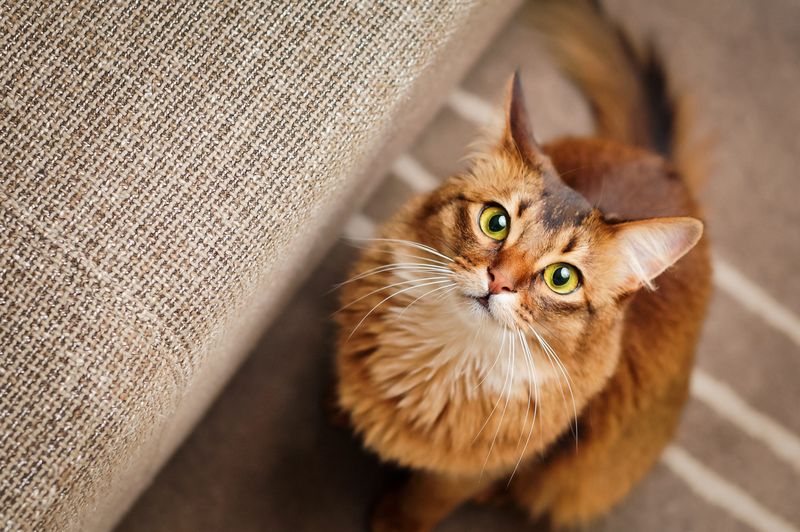📖 Table of Content:
- 1. Brachycephalic Syndrome (Breathing Issues)
- 2. Polycystic Kidney Disease (PKD)
- 3. Hypertrophic Cardiomyopathy (HCM)
- 4. Scottish Fold Osteochondrodysplasia (Painful Joint Disease)
- 5. Munchkin Cat Dwarfism (Spinal and Joint Issues)
- 6. Tailless Gene Spinal Defects
- 7. Hairless Cat Skin Infections and Sensitivity
- 8. Persian Eye and Tear Duct Problems
- 9. Bengal and Savannah Cat Anxiety & Aggression
- 10. Purebred Cats Have a Higher Risk of Cancer
- 11. Overbreeding Leads to Small Litters & Infertility
- 12. Burmese Head Defect (Severe Skull Malformation)
- 13. Genetic Deafness in White Cats with Blue Eyes
- 14. Extreme Coat Breeding Leads to Grooming Problems
- 15. Reduced Lifespan in Overbred Cats
Selective breeding has shaped many of the world’s most popular cat breeds, creating the striking appearances and unique personalities that cat lovers adore. However, this artificial manipulation of genetics comes with a dark side—one that often goes unnoticed behind the beauty and charm of these felines. Breeders prioritize specific traits, such as flat faces, folded ears, or tiny bodies, sometimes at the cost of the cat’s health, longevity, and overall well-being. As a result, many beloved breeds suffer from chronic health issues that can significantly impact their quality of life.
From the breathing struggles of Persian cats to the painful joint issues seen in Scottish Folds, selective breeding has created an epidemic of inherited diseases. Many of these conditions are a direct result of emphasizing aesthetic features over genetic diversity and natural selection. Some breeds are prone to heart disease, while others develop spinal deformities or weak immune systems that leave them vulnerable to infections. Despite these concerns, the demand for purebred cats continues to rise, perpetuating these painful health problems across generations.
By understanding the risks associated with certain breeding practices, cat lovers can make more informed choices when selecting a pet. Whether you’re a current cat owner or considering bringing a new feline friend into your home, learning about these issues is crucial in promoting responsible breeding and ensuring a healthier future for our beloved cats.
1. Brachycephalic Syndrome (Breathing Issues)
Struggling for breath is an unfortunate reality for flat-faced cat breeds like Persians and Exotic Shorthairs. The shortened skull structure, a result of selective breeding, causes their nasal passages to be significantly smaller than normal. As a consequence, these cats often experience chronic snorting, wheezing, and respiratory infections. Even routine activities, such as playing or climbing, can leave them gasping for air. Their soft palates and narrow nostrils further exacerbate breathing difficulties, making hot or humid weather especially dangerous. Veterinary interventions like surgery can help, but the root of the issue remains the intentional breeding for extreme facial features. Prioritizing health over aesthetics is essential to prevent future suffering.
2. Polycystic Kidney Disease (PKD)
Inherited disorders can devastate a cat’s quality of life, and PKD is no exception. This condition leads to the formation of fluid-filled cysts in the kidneys, which grow larger over time and impair function. Breeds like Persians and British Shorthairs inherit this disease at alarmingly high rates, sometimes without breeders even realizing it. Early symptoms include excessive thirst, frequent urination, and weight loss, but many cats remain asymptomatic until kidney failure sets in. Since PKD is a genetic disorder, it can be passed down through generations, making genetic screening crucial for ethical breeding. Unfortunately, many breeders still prioritize appearance over health, allowing this painful condition to persist. Cats deserve better, and responsible breeding is the only solution.
3. Hypertrophic Cardiomyopathy (HCM)
Silent yet deadly, HCM is the most common heart disease in cats. This genetic disorder causes the heart walls to thicken, reducing its ability to pump blood effectively. Breeds like Maine Coons, Ragdolls, and Bengals are disproportionately affected, sometimes developing symptoms at a young age. Affected cats may show signs of lethargy, difficulty breathing, and sudden collapse, but in many cases, the disease remains undetected until a fatal cardiac event occurs. Breeding programs that fail to screen for HCM contribute to its prevalence, making this a human-made issue. Since no cure exists, managing the condition relies on medications that only slow disease progression. Preventative genetic testing should be mandatory in breeding programs to stop HCM from spreading further.
4. Scottish Fold Osteochondrodysplasia (Painful Joint Disease)
Cartilage disorders may sound minor, but for Scottish Folds, they can mean a lifetime of pain. The gene responsible for their adorable folded ears also affects cartilage in their joints, leading to early-onset arthritis and mobility issues. Many Scottish Folds struggle with stiffness, discomfort, and difficulty walking even at a young age. Pain relief options exist, but no treatment can fully reverse the damage caused by this inherited mutation. Breeding two Scottish Folds together results in even more severe deformities, yet some breeders continue this unethical practice for profit. Advocates for feline welfare argue that this breed should either be phased out or bred only with non-Fold cats to reduce suffering. Prioritizing appearance over comfort has led to unnecessary pain, making this one of the most controversial breeding practices.
5. Munchkin Cat Dwarfism (Spinal and Joint Issues)
Short legs may look cute, but for Munchkin cats, they come with serious health risks. This breed was deliberately created to have a genetic mutation that stunts leg growth, leading to dwarfism. While Munchkins can still run and jump, they often suffer from spinal deformities, joint pain, and an increased risk of arthritis. Their unique body structure puts extra strain on their backs, making them more vulnerable to injuries and mobility issues. Unlike naturally short-legged animals like ferrets, Munchkin cats were not designed for this build, leading to ongoing debates about the ethics of their breeding. Some veterinarians warn that Munchkins may have reduced lifespans due to their skeletal issues. Despite these concerns, their popularity continues to grow, fueled by social media and demand for “teacup” pets.
6. Tailless Gene Spinal Defects
A missing tail might seem like a harmless feature, but for Manx cats, it often signals underlying health problems. The same gene that removes their tails can also cause severe spinal deformities, including spina bifida and nerve damage. Many tailless cats suffer from incontinence, weak hind legs, or chronic pain due to malformed vertebrae. While some Manx cats have only mild symptoms, others experience extreme discomfort and mobility issues. Ethical breeders try to avoid producing completely tailless kittens, but accidental cases still occur. Unfortunately, the demand for this unique look continues, despite the well-documented health risks. Preserving natural feline anatomy would prevent these unnecessary genetic complications.
7. Hairless Cat Skin Infections and Sensitivity
Lack of fur in breeds like the Sphynx and Peterbald may make them look exotic, but it also strips them of a crucial protective barrier. Their exposed skin is prone to infections, acne, and excessive oil buildup, requiring frequent bathing to maintain hygiene. Without fur, these cats struggle to regulate body temperature, making them highly sensitive to cold and sunburn. Owners must take extra precautions to keep them warm in winter and protect them from UV damage in sunny weather. Additionally, their lack of whiskers can sometimes impair spatial awareness, affecting their ability to judge distances. Although affectionate and social, Sphynx cats require high-maintenance care that many owners are unprepared for. The deliberate breeding of hairless cats raises questions about whether aesthetics should ever override natural function.
8. Persian Eye and Tear Duct Problems
Excessive tearing is a chronic issue for flat-faced Persian cats, but many owners don’t realize the discomfort it causes. Their brachycephalic skull structure pushes their eyes forward, leading to constant eye discharge and tear staining. This condition, known as epiphora, increases the risk of bacterial infections and painful ulcers. Due to poor tear drainage, many Persians require daily eye cleaning to prevent irritation and infection. Some cases are so severe that surgery is needed to correct the tear duct malformation. While breeders continue producing these extreme features for show standards, veterinary professionals warn that this practice prioritizes looks over health. Encouraging healthier facial structures would allow Persians to enjoy better vision and a more comfortable life.
9. Bengal and Savannah Cat Anxiety & Aggression
Hyperactive, intelligent, and demanding, Bengal and Savannah cats often struggle in typical household environments. Bred from wild ancestors, these hybrid cats require constant stimulation and large spaces to thrive. When confined to small apartments or left alone too often, they can develop severe anxiety, destructive behaviors, and aggression. Unlike domestic breeds, Bengals and Savannahs retain strong hunting instincts, sometimes making them unsuitable for families with small pets. Training and socialization help, but many owners underestimate the effort required to meet their high energy needs. In some areas, these breeds are even restricted due to their unpredictable behavior. Ethical considerations should be taken into account when breeding cats with such wild traits.
10. Purebred Cats Have a Higher Risk of Cancer
Cancer rates in cats vary, but some purebred lines suffer from higher incidences of the disease. Siamese cats, for example, are prone to lymphoma, while Maine Coons frequently develop fibrosarcomas. The limited genetic diversity in purebred populations increases the likelihood of hereditary cancers passing through generations. Some studies suggest that early spaying and neutering may also play a role in certain cancers developing later in life. Because these risks are often overlooked in breeding programs, many cats suffer unnecessarily. Owners of high-risk breeds must stay vigilant for early warning signs, as prompt treatment can sometimes improve outcomes. Genetic testing and more diverse breeding practices could reduce cancer rates over time.
11. Overbreeding Leads to Small Litters & Infertility
Generations of selective breeding have unintentionally reduced fertility in some purebred cats. British Shorthairs, Ragdolls, and Devon Rexes, for example, often have smaller litter sizes compared to mixed-breed cats. This decline in fertility is caused by inbreeding, which narrows the gene pool and limits genetic diversity. Some breeding pairs struggle to conceive at all, leading to the use of artificial methods like hormone treatments and in-vitro fertilization. Over time, the reliance on selective breeding has created fragile bloodlines that depend on human intervention for survival. In contrast, cats with diverse ancestry tend to reproduce more naturally and remain genetically robust. The increasing infertility in certain breeds raises serious concerns about the long-term sustainability of these bloodlines.
12. Burmese Head Defect (Severe Skull Malformation)
A disturbing consequence of extreme breeding, the Burmese head defect is a lethal condition that causes severe skull malformations in kittens. This disorder, known as congenital cranial deformity, leads to underdeveloped or misshapen skulls, making survival impossible. Kittens born with this condition are typically euthanized at birth due to their inability to function normally. The defect occurs when breeders attempt to exaggerate the breed’s rounded head shape, inadvertently increasing the risk of severe mutations. Despite awareness of this issue, some breeding lines continue to produce affected kittens due to the demand for extreme physical traits. Ethical breeding programs focus on eliminating this disorder by outcrossing with healthier lines, but the problem persists. Without intervention, this heartbreaking condition will continue to plague the Burmese breed.
13. Genetic Deafness in White Cats with Blue Eyes
Although stunning in appearance, white cats with blue eyes have a significantly higher risk of congenital deafness. This occurs because the gene responsible for white fur and blue eyes is linked to an underdeveloped cochlea in the inner ear. As a result, many affected cats are completely deaf from birth or experience progressive hearing loss over time. Turkish Angoras, Ragdolls, and Scottish Folds are among the breeds most commonly affected. While deaf cats can adapt to their condition, they are more vulnerable to dangers like traffic, predators, and unfamiliar environments. Ethical breeders work to reduce the occurrence of this trait, but many people still seek out blue-eyed white kittens for their unique looks. Understanding the risks behind this genetic mutation is essential for responsible breeding and adoption.
14. Extreme Coat Breeding Leads to Grooming Problems
Long-haired breeds like Persians, Maine Coons, and Ragdolls require extensive grooming, but many owners underestimate the level of care needed. Selective breeding has resulted in unnaturally thick, fine, and easily matted fur that cats struggle to maintain on their own. Without regular brushing, these breeds suffer from painful matting, which can lead to skin infections and restricted movement. In severe cases, mats become so tight that they cut off circulation, causing sores and discomfort. Some long-haired cats require professional grooming every few weeks just to stay comfortable. While their luxurious coats are beautiful, they are an unnatural burden that compromises a cat’s ability to care for itself. Breeding for slightly shorter and more manageable coats could improve the quality of life for these cats.
15. Reduced Lifespan in Overbred Cats
One of the most heartbreaking consequences of selective breeding is the shortened lifespan of many purebred cats. While mixed-breed cats often live well into their late teens or even early twenties, some purebred cats struggle to reach 10 years due to genetic disorders. Persians, for example, frequently suffer from kidney disease and heart conditions that significantly reduce their lifespan. The Scottish Fold’s joint issues and the Sphynx’s heart problems also contribute to earlier deaths compared to naturally occurring feline populations. Overbreeding has concentrated harmful mutations, making certain breeds far more vulnerable to disease than their non-pedigreed counterparts. While some breeding programs focus on improving longevity, many prioritize appearance over health. Extending the lifespans of these breeds will require a shift in breeding priorities toward genetic diversity and robust health.

